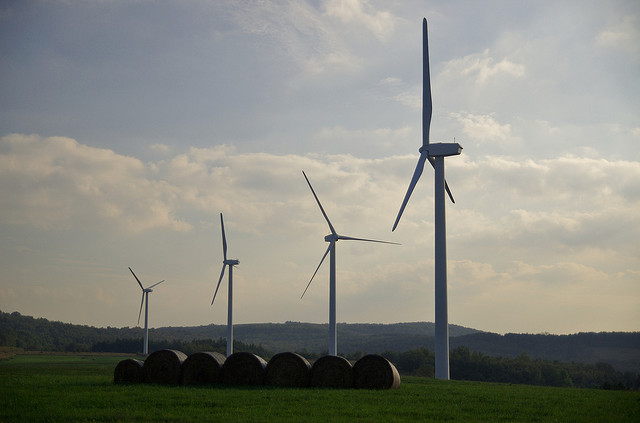Image via paenergy.orgHere at Grid, we’re always encouraging readers to buy local, renewable energy. So, we were excited to see that since 2004, Peco has been among the 20 utility companies in the Northeast to offer such an option. Their Peco Wind program allows customers to purchase some or all of their electric supply as renewable energy credits that support new and current wind projects in Pennsylvania.
However, after December 31, Peco Wind will be canceled. “The program was created before there was residential consumer choice and the rate caps were off to support wind,” explains Courtney Lane, senior energy policy analyst for PennFuture. With the rate caps now off, the market is filled with competitive suppliers and Peco’s program isn’t the most affordable anymore.
So, why do you need to know about this? Well, what’s important for the 20,000 customers currently enrolled in Peco Wind—and anyone else interested in buying renewables—is to recognize that not all alternative energy programs are created equal. Just because a utility company operates locally, doesn’t mean their electricity suppliers are local too. It’s not uncommon for your wind and solar energy to come from outside the state, and possibly from the other side of the country.
To make sure you’re supporting Pennsylvania renewables, check out PennFuture’s Energy Center. There you can find out how to buy clean, renewable energy and browse a list of green energy suppliers in Pennsylvania. Another helpful resource is our energy column from the July 2012 issue that discusses buying local, green energy from Community Energy and the Energy Co-op.









Hmmph. PECO cancels wind. Surprise? Private utility (a.k.a. a PUBLIC utility, but lets move on anyway… ) aims to make enough profit to fulfill its corporate mission, or so one must assume.
Glad they don't sell me my water, my roads, my natgas, my incident solar energy, etc.
Hmmph. PECO cancels wind. Surprise? Private utility (a.k.a. a PUBLIC utility, but lets move on anyway… ) aims to make enough profit to fulfill its corporate mission, or so one must assume.
Glad they don't sell me my water, my roads, my natgas, my incident solar energy, etc.
Customers should know they can check out ChoosePAWind at http://www.ChoosePAWind.com to learn about other renewable energy choices that offer 100% PA wind and solar, just like the PECO product.
I am not sure why there is a slavish desire to buy our renewable energies exclusively from local renewable suppliers. By far, the most productive land based wind regions in the country are in the mid-west, so even when accounting for transmission losses, wind energy from non-local high wind regions boasts superior energy efficiency to locally sourced wind energy (the same turbine in the mid-west will generate more electricity than what it would produce in PA, akin to how the same solar module will produce more energy in Arizona than it would in PA).
Additionally, diversification of renewable energy sources can lead to a more stable energy grid. The times when the wind is blowing in the mid-west are not necessarily the same as when winds are peaking in PA or off the mid Atlantic coast. Similarly, by adding solar (local or otherwise) to the mix further adds to the diversification of peak renewable energy generation (e.g. early to mid afternoon for solar as opposed to early evening for offshore wind).
Although it is admirable to promote locally produced renewable energy sources, it is not necessary to lament the use of renewable energies from other parts of the country in situations where it makes more sense to do so.
I am not sure why there is a slavish desire to buy our renewable energies exclusively from local renewable suppliers. By far, the most productive land based wind regions in the country are in the mid-west, so even when accounting for transmission losses, wind energy from non-local high wind regions boasts superior energy efficiency to locally sourced wind energy (the same turbine in the mid-west will generate more electricity than what it would produce in PA, akin to how the same solar module will produce more energy in Arizona than it would in PA).
Additionally, diversification of renewable energy sources can lead to a more stable energy grid. The times when the wind is blowing in the mid-west are not necessarily the same as when winds are peaking in PA or off the mid Atlantic coast. Similarly, by adding solar (local or otherwise) to the mix further adds to the diversification of peak renewable energy generation (e.g. early to mid afternoon for solar as opposed to early evening for offshore wind).
Although it is admirable to promote locally produced renewable energy sources, it is not necessary to lament the use of renewable energies from other parts of the country in situations where it makes more sense to do so.